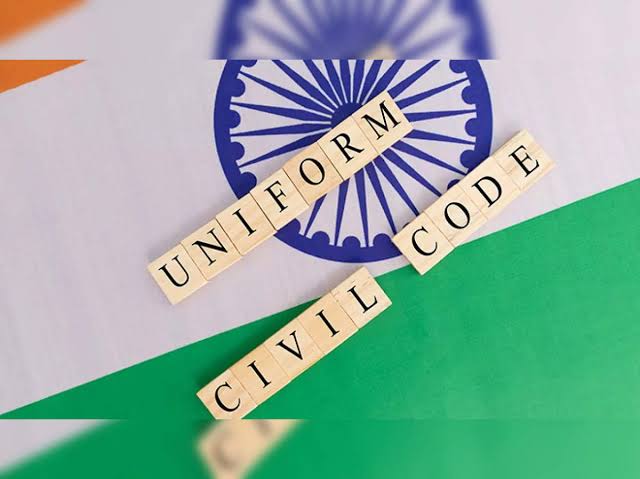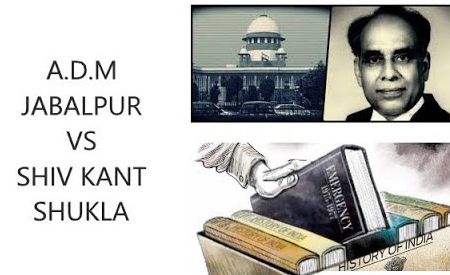UCC – Bringing about Uniformity in diversity

Author: Shivangi Singh, a Student of Christ University
Abstract – UCC is to replace laws inconsistent with each other, the Hindu Marriage Act, Divorce Act, Hindu Succession Act, Parsi Marriage, Indian Christian Marriages Act and Indian Divorce Act, all rights to matrimonial property, including and not limited to maintenance, adoption, inheritance and succession can be applied under the provisions of the statute. At the same time, specific codes like the Sharia (Islamic laws) are not codified, and they are solely based upon religious scriptures and interpretations; proposals also include monogamy, equal rights for son and daughter over the inheritance of their paternal property, gender and religion-neutral laws with in respect custody sharing, to will, charity, divinity and guardianship.
Introduction: The Indian Constitution, from Articles 25 to 28, ensures religious freedom to Indian citizens and allows religious groups to manage their affairs independently. Article 44 of the Indian Constitution expects the Indian State to apply common law and directive principles to all Indian citizens while formulating national policies,
History: The Indian State of Goa, once ruled by the Portuguese and separated from India, retained a typical Family Law called the Goa civil code. This makes it the only State in India with a uniform civil code. The civil code in Goa is unique because it has special provisions for different communities. For example, it allows Hindu men to practice bigamy if their wife does not give birth to a child before the age of 25 or a male child before the age of 30. The “Lex Loci” report from October 1840 emphasized the necessity of Uniformity in the codification of Indian law and its importance relating to crimes, contracts and evidence. However, it recommended that the personal laws of Muslims and Hindus should be kept outside such codification.
This brought about the conflict between two religions as per the policy of divide and rule by the British Empire; they separated which sphere shall be governed by religious scriptures and customs of various communities and thus applied in local courts or panchayats during civil disputes between same religion disputes, state intervention was exceptional only in crucial circumstances. The other communities, such as Jats and Dravidians, had conflicts; for instance, Shudras allowed widow remarriage completely against the Hindu scriptural law, making it difficult to investigate the practices followed case-by-case; the customary law thus became more complex to implement.
The local cultures of Muslims across India were diverse, resulting in the non-uniformity of Muslim Personal law based on Sharia law at lower courts. Thus, customary law was applied, which is more discriminatory against women, such as women mainly in northern and western parts of India, who were mostly restrained from dowry settlements and property inheritance, both of which the Sharia law provides. The pressure from the Muslim elite increased, which led to the passing of the Sharia law of 1937, stipulating that Islamic laws on marriage, adoption, divorce, maintenance, succession and inheritance would govern all Indian Muslims.
Hindus have to follow their Hindu code bill. Meanwhile, Muslims and other religions were free to follow their respective laws. Reformers like Ishwar Chandra Vidyasagar acted as a catalyst in outlawing such customs by passing such reforms through legislative processes. The first law to ensure women’s economic security was the Indian Succession Act of 1865, as the British feared facing opposition from the orthodox community leaders. The Indian Marriage Act of 1864 had procedures and reforms solely for Christian marriages.
Some significant changes in law reforms beneficial to Hindu women include the Hindu Widow Remarriage Act in 1856, the Hindu Inheritance ( Removal of Disabilities) Act of 1928 and the Married Women’s Property Act of 1923. Unfortunately, the conservative Muslims who wanted to follow Sharia Law opposed sun protection extended towards Muslim women. The Karachi Congress resolution guaranteed gender equality; based on this, the All India Women’s Conference demanded a uniform civil code to replace the existing personal laws. These reforms were passed and proved to be a significant move for the Deshmukh Bill, also known as the Hindu Women’s Right to Property Act of 1937, leading to the formation of the B.N. Rau committee to determine the necessity of Hindu common law. Furthermore, the committee reviewed the Act of 1937 and recommended a civil code for marriage and succession, set again in 1944 and 1947, and reported to the Indian Parliament. The first enactment which gave Indian Citizens an option of civil marriage was the Special Marriage Act of 1872, amended again in 1923, permitting Hindus, Buddhists, Jains and Sikhs to marry either as per their law or as per the act without having to renounce their religion as well as retaining their succession rights.
Reformative case laws –
Shah Bano Begum v. Mohammad Ahmed Khan (1985). – The debate then centred on Muslim Personal Law, which is partly based on Sharia law, allowing unilateral divorce and polygamy. Under section 125 of CrPC, SC upheld Muslim women’s right to claim maintenance, even after the expiry of the Iddat period.
Sarla Mudgal v. Union of India (1995) – S.C. held that without dissolving the first marriage, the Hindu husband could not convert to Islam and marry another woman.
Shayara Bano v. Union of India (2017) – S.C. declared triple talaq as violative of the dignity and equality of women and as unconstitutional.
Current Status: UCC has been proposed twice, in November 2019 and March 2020, but was withdrawn both times before being introduced in parliament. The bill is reportedly under consideration due to differences between the BJP and RSS.
Reformative case laws –
Shah Bano Begum v. Mohammad Ahmed Khan (1985). – The debate then centred on Muslim Personal Law, which is partly based on Sharia law, allowing unilateral divorce and polygamy. Under section 125 of CrPC, SC upheld Muslim women’s right to claim maintenance, even after the expiry of the Iddat period.
Sarla Mudgal v. Union of India (1995) – S.C. held that without dissolving the first marriage, the Hindu husband could not convert to Islam and marry another woman.
Shayara Bano v. Union of India (2017) – S.C. declared triple talaq as violative of the dignity and equality of women and as unconstitutional.
Other Jurisdictions: No country has fully implemented a Uniform Civil Code that covers all personal matters for its citizens. However, some countries like France, Germany, and Turkey have aspects of Uniformity in their civil codes that apply to all citizens, regardless of their religion or beliefs.
Positives: Many provisions are inherently patriarchal and need an overhaul as the aspirations of UCC align with the right to equality and dignity guaranteed by the Indian Constitution.
Women’s empowerment in the choice-based approach will genuinely usher in true social transformation and balance unity and diversity.
Anyone can seek to register their marriage, especially inter-faith and inter-caste marriages.
It would bring about contemporary and forward-looking elements into the current personal laws.
Thus, Ensuring social reform, eliminating inequities, and upholding fundamental rights are crucial.
Controversies: Nagaland Transparency, Public Rights Advocacy and Direct-Action Organisation opposed the idea, saying it would erode India’s local customs and traditions; even the Hynniewtrep Youth Council from Meghalaya requested the Law Commission not to implement the UCC. There is collective anxiety in minority communities who fear that majoritarian laws might be imposed in the name of making a homogenous law.
Many allies from NDA and opposition parties and BJP are against the Uniform Civil Code, from Northeast India especially, claiming that it will end special privilege of communities and go against the “idea of India” in June 2023 after renewed calls by our Prime Minister Narendra Modi about implementing a UCC.
Conclusion: In a salad-bowl-like society where each culture combines with others while maintaining its contrasting yet distinct identity, like India, Achieving a one-size-fits-all civil code is challenging. Therefore, the extent of its success is still as India lays greater emphasis on religious freedom. UCC aims to foster gender justice; at the same time, the state has to be cautious about not violating the freedom of religion and choice, which is calling it a brick-by-brick method of ushering reform in a diverse country like India.
being determined





Commendable 👍